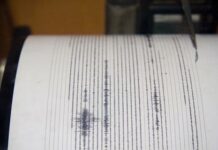GILROY
– It began as a way to remind seniors to take their medications,
but it could end up saving the lives of thousands from floods,
earthquakes and crime, and it’s coming to Gilroy soon.
GILROY – It began as a way to remind seniors to take their medications, but it could end up saving the lives of thousands from floods, earthquakes and crime, and it’s coming to Gilroy soon.
As early as January, the city will install a state-of-the-art emergency management system called TeleMinder – a computer database which uses local phone lines as a way to communicate with people in case of an emergency.
Much like the computerized phone call used by many doctors’ offices to remind patients of appointments, the TeleMinder will have the capacity to call up to 60 local residents at a time to inform them of current emergency situations.
Gilroy will be the first city in South County to have such a system.
“This is a great tool that can be used for crime prevention, emergency evacuations – the imagination is the only limit here,” said Capt. Debbie Moore of the Gilroy Police Department, who is spearheading the city’s effort to purchase the TeleMinder. “This is a great use of technology for public safety.”
Already approved by City Council, the TeleMinder will be purchased as part of a federal block grant of $55,981 given to Gilroy in July to assist law enforcement. The total cost for the system will be $42,201, which includes installation, employee training and two years of maintenance.
Stationed in the GPD’s dispatch center, the system will have access to the city’s 911 database and use a Geographic Information Systems mapping device to communicate emergency messages to targeted neighborhoods throughout the city.
For example, if there is a flood in the city, emergency personnel in the GPD’s dispatch center will be able to record a voice message and TeleMinder will instantly call 60 households in a designated area of the city where the flooding might be the worst. The message could inform citizens of the current situation and give directions on what action to take – thousands of households can be reached within 10 minutes.
TeleMinder can also be used in crime prevention, such as calling members of a neighborhood where a rash of auto burglaries has occurred to warn the residents.
“The uses are pretty much endless,” said Ed Rugherford, CEO of the Los Altos-based TeleMinder. “If there’s a lost child in a neighborhood everyone can be informed to be on the lookout; if there’s a hostage situation people can be contacted to either evacuate their house or business or stay put. This is a communication tool to help the community.”
TeleMinder was designed 15 years ago through grant money as a way to call seniors every day to remind them to take their medications, it was about 10 years ago when law enforcement agencies and cities around the country began to realize TeleMinder and similar systems could be used to improve emergency communications.
Rugherford said his closest client to Gilroy currently is the City of Palo Alto, but he’s had inquiries from several other Silicon Valley cities, and is operating TeleMinder systems in Boston, Beverly Hills and hundreds of other cities across the country.
One of Rugherford’s clients, the City of Roseville just outside of Sacramento, won a national safety management award in 1997 for its use of TeleMinder to evacuate a portion of the city during a flood.
“There was a case in Southern California where several houses in a neighborhood were being burglarized, and the cops thought the man responsible was living in the area,” Rugherford said. “The cops sent a message to be on the alert to every house in the area, including the suspects. The burglaries stopped and weeks later the man moved.”
In disaster situations such as flooding, an earthquake or a toxic spill, local officials usually respond to neighborhoods using bullhorns and other tactics to inform citizens of the current situation. What the TeleMinder provides is time – a crucial element in any emergency situation, City Manager Jay Baksa said.













